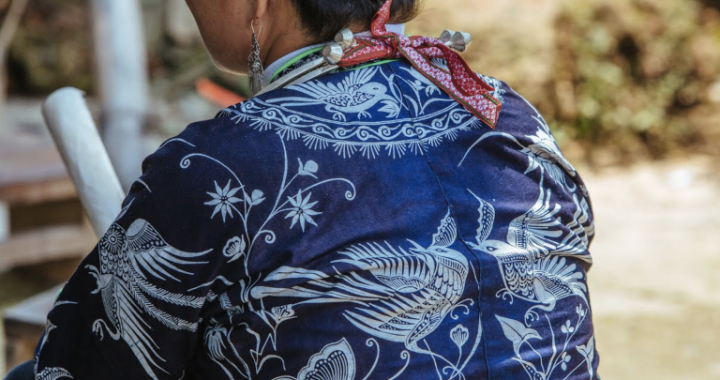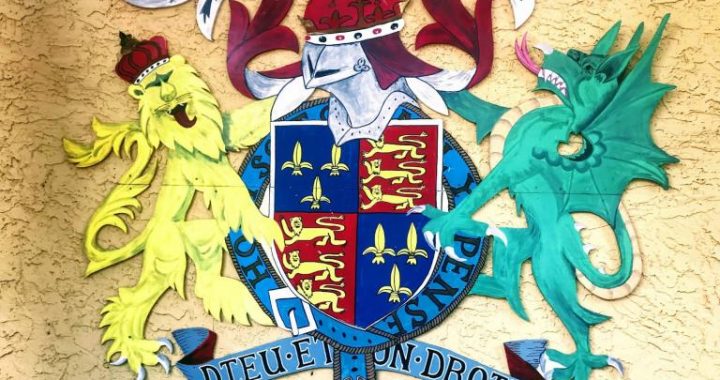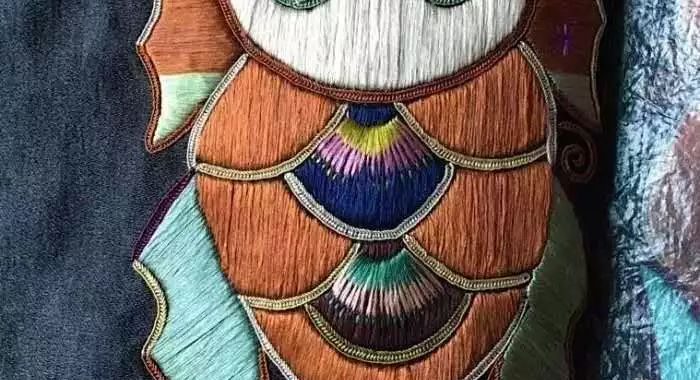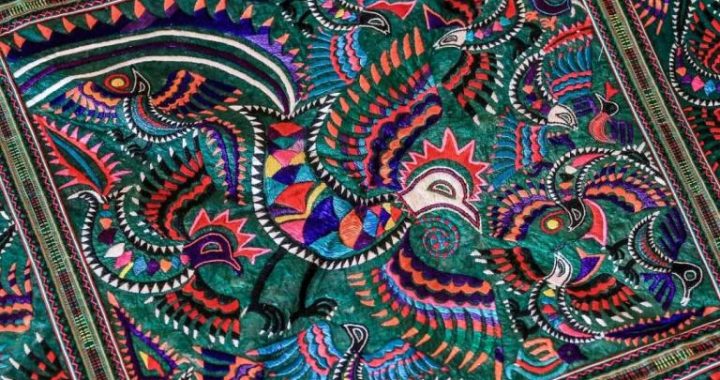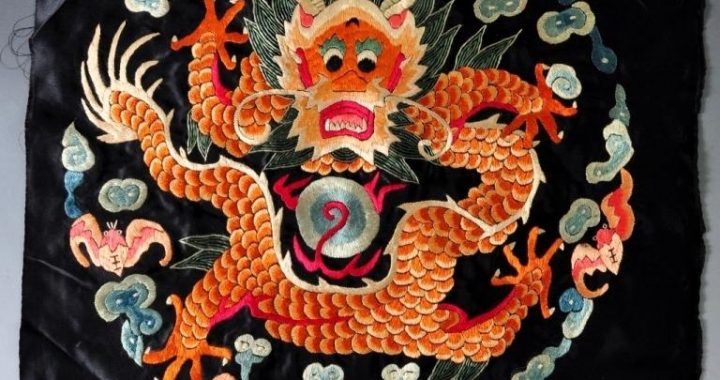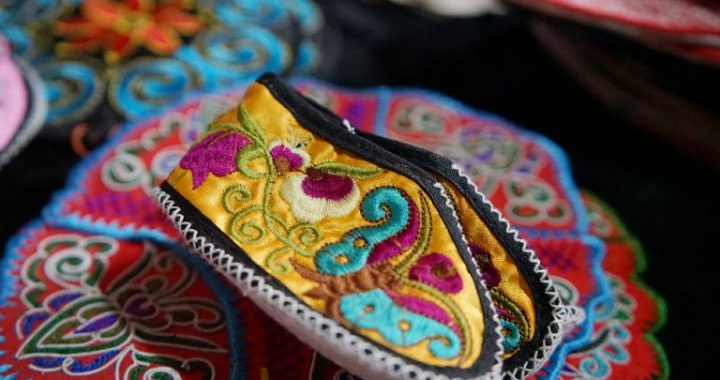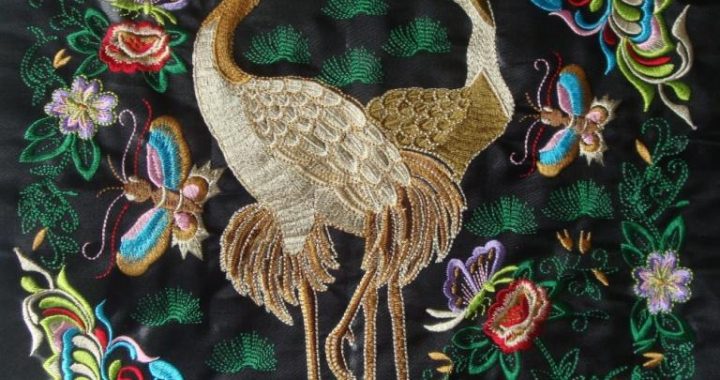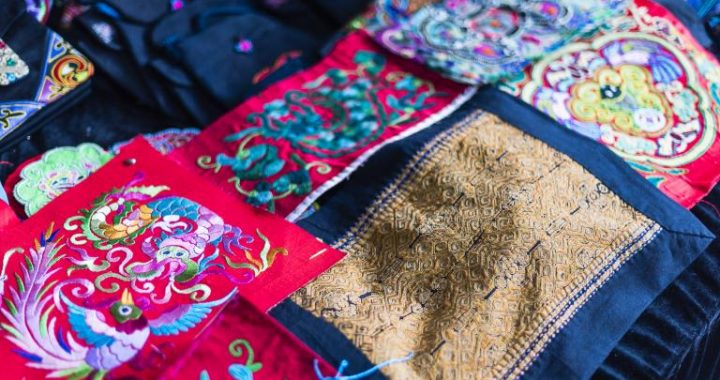Dress and Adornment
7 min readEmbroidery art in dress and adornment also embodies original Chinese philosophy.
Likening human body to the universe, the upper part(the head) is the sky, the lower part (the feet) is the earth, and the middle(the pubic area) is the center. The understanding of this leads to the culture implication of Chinese dress and adornment.for women in northern Shaanxi to wear a pleated apron girdle when cooking on the 3 Many folk dress and adornment are designed as philosophy symbols. It is a custo second day after getting married. It is meant to show off the embroidery work on the waistband, usually patterns of two yin-yang tiger heads; pig heads, or fish heads connected at the waist. In eastern Gansu plains, central Shaanxi plains and southern Shanxi plains, the Han Nationality idolizes tiger totem, therefore, people would wear vests with a tiger symbol to conquer the five poisonous insects; or wearing a tiger hat, a pair of tiger shoes and a tiger undergarmer. On the bed, it is tiger pillows, blankets, dye-printed or wax-printed tiger cloth wrappers; and on the door screen is “a tiger coming down the mountain. This is nothing short of being a family member of the tiger clan.
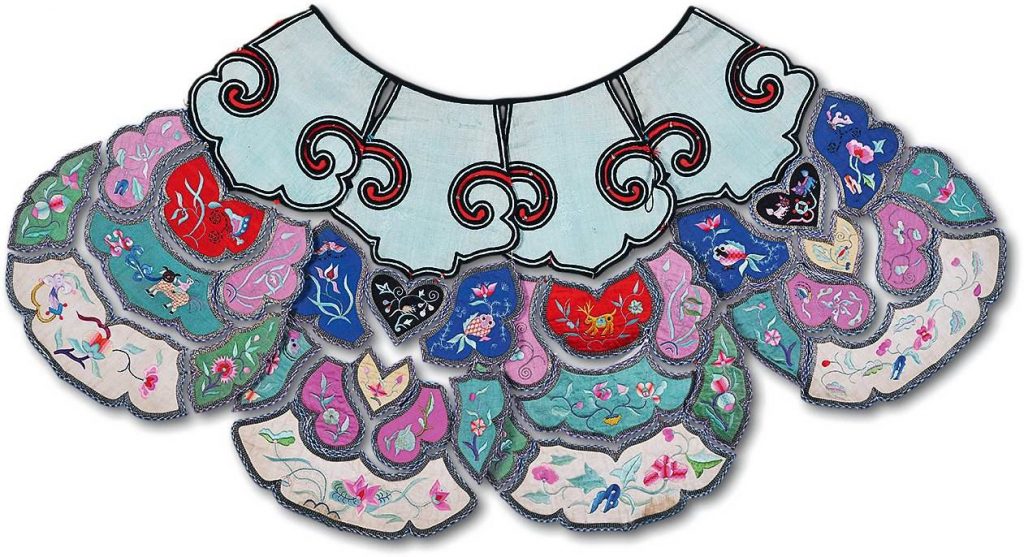
Paper-cut as embroidery patterns for making Miao ethnic group’s costume: a national heroine(Taijiang Guizhou).
Among the costumes of Yi ethnic group in Huangping, Guizhou, a headwear named tassel hat, is a round hat in the shape of the sun with radiating tassels like the sun rays and an arrow on top aiming at the sun. Looking down from the middle of the tassel hat as the pleated skirt opens up; it is a visual symbol of the sun radiating from the center. Yi women describe it as this “their hat symbolizes the sun carrying an arrow in the center. In ancient times, there were total of 13 suns and 13 moons up in the sky. Unbearable to live under that condition, the ancestors of Yi shot down 12 suns and12 moons with silver arrows, leaving only one of each. The costume and the headwear today are part of that legend.
Silver crown with the totem of sun and ox homs worn by Miao women in Guizhou.
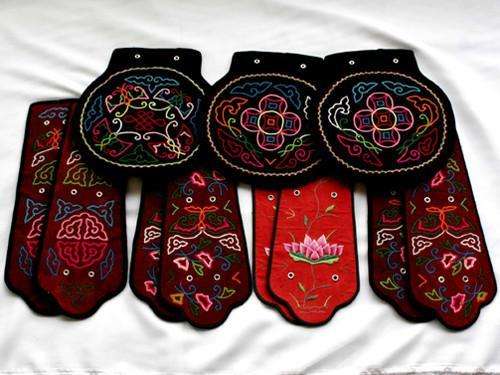
Birds-eye view of Gelao ethnic group’s pleated skirt and a tassel cap in the center as symbol of the sun (Jieping, Guizhou).
In the Miao villages in southeastern Guizhou, women wear a silver crown to idolize the sun and ox totem. The decorative silvery brightly glitters from the center of sun between the ox horns. A matching pleated skirt is from waist down, symbolizing sun rays. Miao embroidery boasts a variety of categories, besides flat embroidery; there are also tied embroidery, plated embroidery, crape embroidery, and others.flat embroidery is often used for sleeves; double layer embroidery for collar flower; and weaving embroidery on waist bands. It is worth mentioning that each branch of Miao ethnic group has its own costume as national identity which can not be changed. Even the direction of the needle goes when embroidering is set in certain ways. On the lower part of the pleated skirt are three horizontal thread lines which tell another story. In remote antiquity, a large scale war was waged between the army from the emperor and Chiyou, ancestor of Miao ethnic group, which ended in Chiyou’s defeat.
To have later generations always remember the hardship that their ancestors went through, they embroider three lines on the skirt to exhibit the route that their ancestor took to migrate south after the war. From the top down, the first line was to cross the Yellow River; then the Yangtze River; finally the Yuan River before settling down at the Miao villages in Guizhou Another unique costume is the “hundred birds” blouse, an embroidery dragon with bird head against the green bottom to tell a Miao ethnic group fairy tale. Without any crop seeds at first, the Miao family had been eating tree leaves for food until bird Ji Yu carried their ancestor up to heaven to be granted crop seeds by god. Using a variety of styles in embroidery and drawing from resourceful art images based on legends and fairy tales recorded in the “Ancient songs of Miao ethnic group,”women in the Miao villages have created exquisite embroidery art on their costumes and clothes with ultimate delicacy. It is a master piece of Chinese embroidery art.
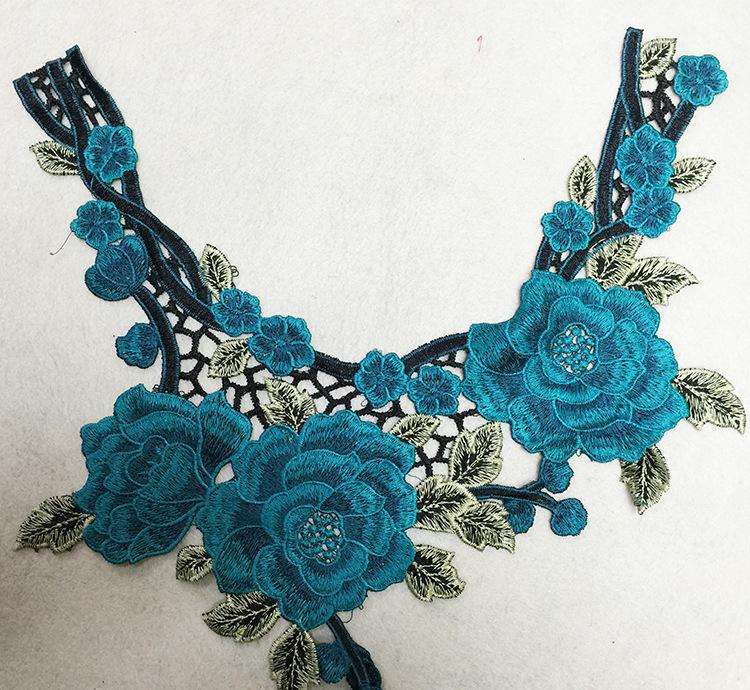
Miao ethnic group’s embroidery dress for women, “Ancient songs of Miao ethnic group(Kaili, Guizhou) Birds-eye view of a pleated skirt(Miao ethnic group) as a symbol of the sun (Guizhou).
Wax batiking work of Bai ethnic group(Dali, Yunnan).
Women’s dress and adornment of Yi ethnic group (Ningliang, Yunnan).
Yi ethnic group in southwest China idolizes black tiger totem. Black, regarded as the color of the sun, is the color of their national costume. Women dress in black skirts, and men in slacks wearing a black turban with a symbol in the middle pointing to the sky. It is symbol of absolute sacredness referred to as the “Buddha of heaven.
There are also symbols in the shape of a character “Ren”meaning people, or a rotating tie towards the sky. Women’s headwear is a square cap with a rotating cross in the center. The embroidery symbols on their clothes or tobacco bags bear distinct masculine spirit. Examples like a radiating diagram symboling “The autumn moon;” “Red sickle flower;” are some of the representative works. Yi ethnic group’s’ costume share similar design and pattern with the designs on Majiayao antiques unearthed in the northwest regions. It is reasonable to say that, Yi’s ancestors, who migrated from the northwest to the southwest in ancient times, were the creators of Majiayao Culture. Bai ethnic group worships white tiger, therefore, white is the main color of their national costume and headwear. Butterfly, octagonal petal flower and octagonal diagram are favorite subjects of their embroidery works to idolize the sun.
Likewise, from the attire of Naxi ethnic group who idolizes sheep totem, a northwestern tribal culture featuring farming and animal husbandry can be traced Naxi women’s headwear is a roll of blue cloth in a half circle, matched with a stripe cross on the chest and white sheep leather skirt laced with black sheep hair.
Women’s dress and adornment of Naxi ethnic group(Lijiang, Yunnan)
Costume and ornament of Bai ethnic group.
In Dawu Mountain in Taiwan, the attire of the Paiwan and Rukai ethnic groups reflect a culture of “the hundred-step snake”totem. It was said that the ancestor of Paiwan ethnic group was direct descendant of the sun. The sun placed an egg in a jar, which was earth, to be incubated by a male and a female snake, and that started children of Paiwan ethnic group. Paiwan national costume is the dress code at annua harvest worship and wedding ceremonies. Symbols of “the hundred-step snake” totem are embroidered on their clothes and hats. From the front, we see two snakes on the shoulders and sleeves; two more on the pants one on each leg. From the back, the top part is their humanized ancestor, flanked by two yin-yang snakes that bred him; the lower part is like the tail of a wild boar, symbolizing sun rays. The cap has a sun glass in the middle, surrounded by a circle of “hundred-step snake”symbols. For seniors, the sun glass is decorated with wild boar teeth. Women wear snake necklace; and men wear “hero belt”with symbols of “hundred-step snake. “Against a black background, the sketches of glittering golden snake from the head to the feet are very glamorous. On special occasions, all invited guests, even the outsiders, are expected to be in Paiwan national dress.
Men’s festival costume of Paiwan ethnic group for the occasion of celebrating harvest(Dawu Mountain, Taiwan) In Yanbian, Jilin Province, it is customary to have one-year-old baby wear embroidery waistband made by the mother or the grandmother which bears over 60 different types of embroidery decorative symbols, including humanized tiger, eight diagrams sun flower; embroidery ball, triangle, egg plant, garlic, etc. It is wish for the baby to live over 60 years in age.
With Manchurian wedding custom, male needs to wear a headgear when he gets married. It is sewed with pieces of black cloth into a circular cone shape pointing to the sky, with a red sun symbol on top. Women’s headwear is a triangle-shaped sun flower. In the Qing Dynasty, male Manchuria’s “fall hat” (warm hat) and “summer hat” (cool hat) were all white and shaped in circular cone, topped by a ball as the sun carrying radiating red straps as sun rays. Female hat was calledQitou,” symbol of swallow tail wing developed from the art design “double coiled hair. “Manchurians also embroider lotus on shoe soles as they put it “stepping on lotus flower will convert into a Buddha,”meaning to become immortal.
Xinjiang Uygur ethnic group’s headwear is made with 4 pieces of cloth, with embroidery patterns of the tree of life, the flower of life or badam apricot seeds from the tree of life. Their “sky-reaching” headwear and striped shirts and pants have become a unique cultural symbol with distinct national characteristics.
